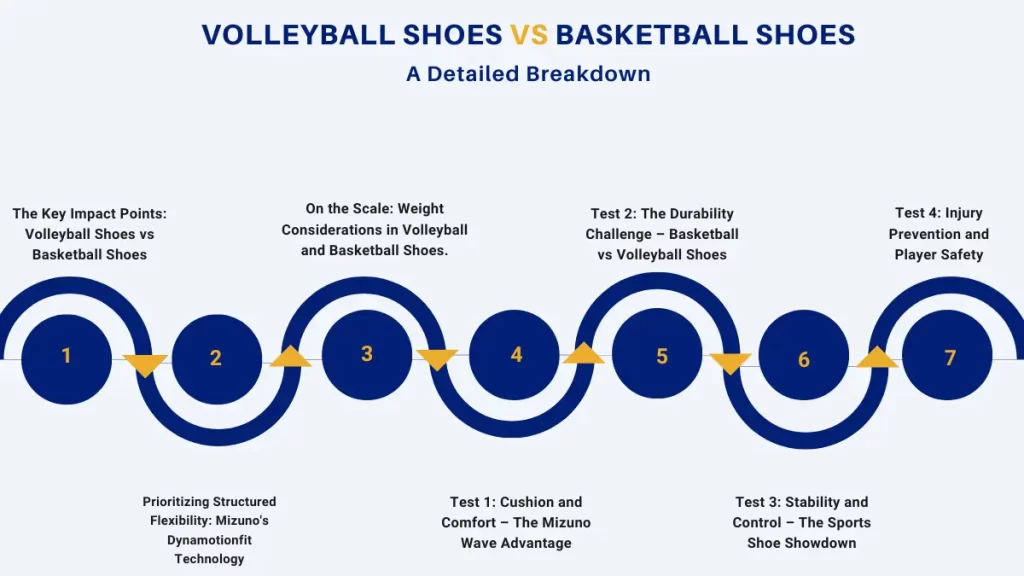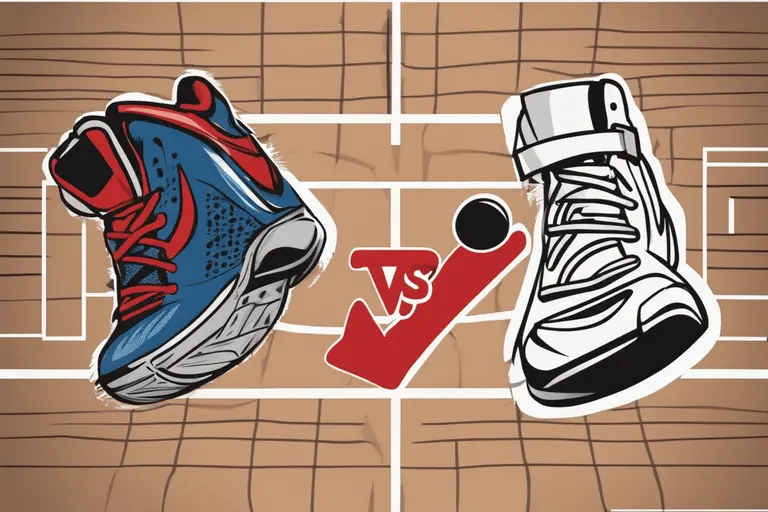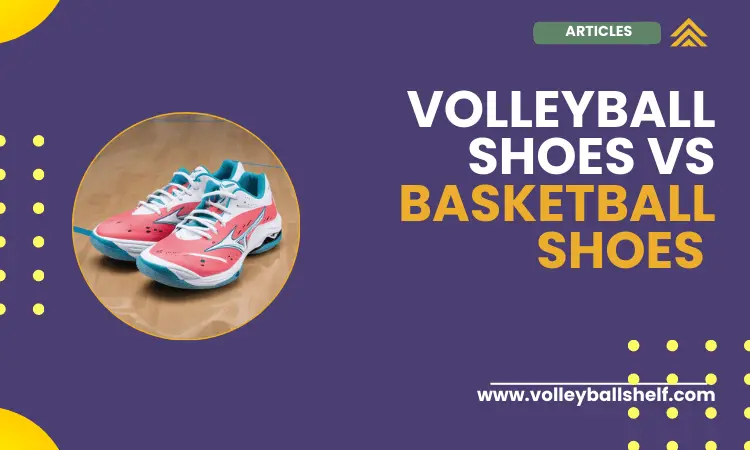Introduction
In the realm of court sports, the choice of footwear significantly influences an athlete’s performance. The right pair of shoes can mean the difference between scoring the match point or letting the victory slip away.
This article explores the distinctions between volleyball shoes vs basketball shoes, focusing on their performance benefits, biomechanical effects, and the ever-evolving footwear trends.
Quick Response
“Volleyball shoes vs. basketball shoes” compares specialized footwear for each sport. Volleyball shoes offer lightweight design and grip for quick lateral movements and jumps. Basketball shoes prioritize ankle support and cushioning for high-impact gameplay. Understanding the distinctions aids athletes in choosing the ideal shoe for their sport.
1. The Key Impact Points: Volleyball Shoes vs Basketball Shoes
Volleyball shoes vs basketball shoes is very interesting topic to read because they both are very close to each other in the sense of game.
When considering the impact of footwear on athletic performance, it’s essential to understand that each sport has unique biomechanical requirements.
In volleyball, the key movements include abrupt starts and stops, lateral movements, and high jumps.
Conversely, basketball involves more running and sudden changes in direction. These differences fundamentally shape the design and technology integrated into these shoes.
Volleyball shoes, such as the Mizuno Wave Momentum, focus more on cushioned materials and stability features for foot stabilization and to lessen the impact on athletes’ joints during these high-impact movements.
On the other hand, basketball shoes incorporate more dense and durable materials to accommodate the sport’s dynamic nature.

2. Prioritizing Structured Flexibility: Mizuno’s Dynamotionfit Technology
The importance of structured flexibility in athletic shoes cannot be overstated. It allows athletes to make quick, precise movements while ensuring they maintain body control and reduce the risk of injury.
Mizuno’s Dynamotionfit technology, found in their volleyball shoes, is an excellent example of this.
This technology incorporates a specially designed midsole offering flexibility without sacrificing the shoe’s stability. It enables athletes to make fast, abrupt starts and stops on the court without losing control – a significant advantage in high-paced sports like volleyball.
3. On the Scale: Weight Considerations in Volleyball and Basketball Shoes
When comparing volleyball shoes like the Mizuno Wave Momentum with traditional basketball shoes, one notable difference is the weight.
Volleyball shoes are designed to be lightweight, offering athletes the ability to move quickly and effortlessly around the court. They usually feature soft materials, such as mesh and knit uppers that contribute to their lightweight profile.
On the other hand, basketball shoes are often heavier due to their thicker soles and more durable materials. These features are necessary to provide the necessary traction and impact protection required in the sport.
However, this doesn’t mean that basketball shoes compromise on comfort; they offer cushioning typically made from EVA foam, ensuring a secure and comfortable fit.
4. Test 1: Cushion and Comfort – The Mizuno Wave Advantage
A prominent feature of Mizuno volleyball shoes like the Mizuno Wave Momentum is the Wave technology, a unique midsole that offers both cushion and stability.
This technology uses a wave-like design to distribute the impact of each step evenly across the shoe, reducing the strain on an athlete’s foot and providing extra cushion.
In contrast, basketball shoes usually feature a more uniform cushioning system that offers ample support for running and lateral movements. Still, it might not provide the same level of targeted cushioning as Mizuno’s Wave technology.
5. Test 2: The Durability Challenge – Basketball vs Volleyball Shoes
Durability is a crucial aspect of any sports shoe, and both basketball and volleyball shoes are designed with longevity in mind.
However, the nature of the two sports means that the shoes face different durability challenges.
Basketball shoes are designed to withstand intense, continuous action, with a focus on the sole’s durability to provide consistent traction.
Volleyball shoes, on the other hand, emphasize durability in the upper and midsole to maintain stability and cushioning despite the frequent high jumps and sudden movements.

6. Test 3: Stability and Control – The Sports Shoe Showdown
Both volleyball and basketball shoes have features designed to enhance stability and control.
Volleyball shoes often have features like the Mizuno Wave Momentum’s Dynamotionfit technology, which offers foot stabilization and control.
Basketball shoes, conversely, focus more on ankle stability – a response to the sport’s running and rapid direction changes. High-top designs and secure lacing systems are common in basketball shoes to provide this enhanced ankle support.
7. Test 4: Injury Prevention and Player Safety
Finally, it’s important to consider how these shoes contribute to injury prevention. Volleyball shoes are designed to support the feet and ankles during high-impact movements, helping to reduce the risk of injury.
In contrast, basketball shoes are designed with impact protection and ankle support in mind to prevent injuries related to running and abrupt changes in direction.
The biomechanical effects of different sports shoes, coupled with advancements in technology and shifts in consumer preferences, continually influence footwear trends.
By understanding the specific performance benefits and design features of volleyball shoes vs basketball shoes, athletes can make an informed decision about the best footwear for their needs.
Remember, the right pair of shoes is about more than just making a fashion statement – it’s about securing your footing and giving your performance the best advantage.



![A Comprehensive Guide on How to Wash Mizuno Volleyball Shoes? [3 Effective Technique]](https://volleyballshelf.com/wp-content/uploads/2023/08/How-to-Wash-Mizuno-Volleyball-Shoes.webp)
![How should volleyball shoes fit? [4 key factors]](https://volleyballshelf.com/wp-content/uploads/2023/09/How-Volleyball-Shoes-Should-Fit.webp)
![Do Asics Volleyball Shoes Run Small? [5 Reasons]](https://volleyballshelf.com/wp-content/uploads/2023/09/Do-Asics-Volleyball-Shoes-Run-Small.webp)
![When to get new volleyball shoes? [3 key signs]](https://volleyballshelf.com/wp-content/uploads/2023/09/When-to-get-new-volleyball-shoes.webp)
![Can You Wear Tennis Shoes for Volleyball? [ 4 Core Differences]](https://volleyballshelf.com/wp-content/uploads/2023/08/www.reallygreatsite.com-4-1.webp)
![How to make your volleyball shoes smell better? [9 Tips]](https://volleyballshelf.com/wp-content/uploads/2023/09/how-to-make-your-volleyball-shoes-smell-better.webp)